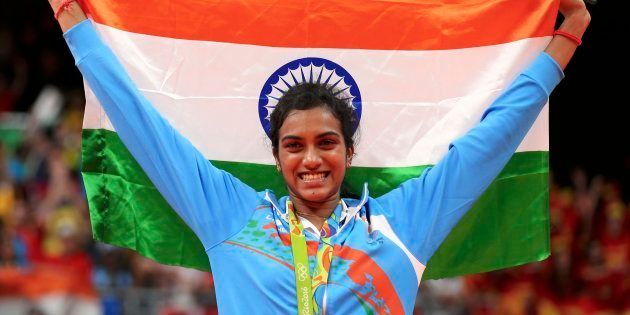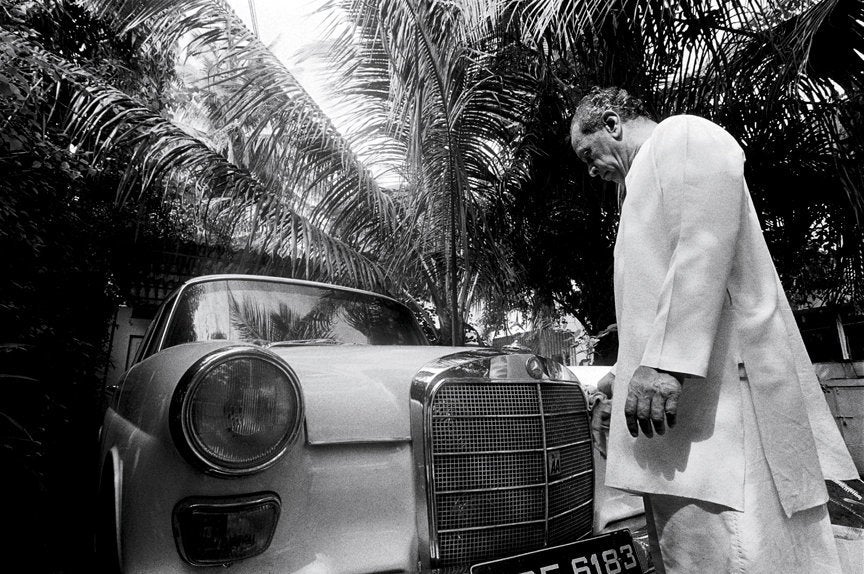
When the daughter of P. Vijaya and P.V. Ramana first stepped on to the badminton court at the Indian Railways Institute of Signal Engineering and Telecommunications, the volleyball-playing couple were delighted. Ramana, an Arjuna awardee and bronze medallist with the Indian team at the 1986 Asiad, and Vijaya, had sport in their blood, so it was only natural that their daughter follow suit.
Two years later, in 2005, the 10-year-old Sindhu caught the eye of national coach Pullela Gopichand, who persuaded Sindhu's parents to enrol her at his academy in Gachibowli. For the next five years, Ramana would wake up while it was still dark outside and drive his daughter 40 kilometres from their home in Secunderabad to training, six days a week.
Spending four hours a day on her commute in addition to training and trying to manage school work took a toll on the young Sindhu. To ease the process, the family decided to put her in the hostel at the academy.
The baby of the family—her sister Divya is seven years older—Sindhu is very attached to her parents and missed home so much that her training and results started to suffer. So, in 2010, after what must have been a great deal of deliberation, Sindhu's family decided to move to Gachibowli.
Gopichand's confidence in the potential of the long-limbed teenager was so complete that Sindhu's parents never really had much of a choice. It was decided that Ramana will be the one doing the commuting, while Sindhu would be free to spend every available minute either training, playing or thinking about badminton.
Sindhu's household still rises before daybreak. With her first session at the academy at 0430, she has hardly ever been at leisure to watch the sun rise over the sprawling city of Hyderabad. The morning session lasts till about 0600 and Ramana invariably hangs around, watching his daughter go through the paces.
Then, it's back home for a quick breakfast and a nap before daddy heads to work and daughter hits the courts for a gruelling three-hour training session. At 1630, Sindhu is back at the academy for the last session of the day—focussed on fitness. Six days a week, since the age of 10, this is what Sindhu's days have looked like. Her's is not an exception.
Pick a successful athlete, from anywhere in the world, at random, and they will tell you tales of sacrifice on the part of others and bloodymindedness on the part of the self. What makes Sindhu's story different, to a large extent, is that for her it all worked out. The self-belief and drive was present, as was a supportive family structure. And when Gopichand's systematic and custom-tailored coaching was added to that puzzle, the picture was complete.
Standing at 179 cms, just shy of six feet, Sindhu's height is both an advantage and a potential hurdle. Gopichand realised this early and brought trainer Christopher Paul to the academy to devise a physical training regimen based on her physique.
The idea, in simple terms, was to enable Sindhu to strengthen her long legs and be able to transition from attack to defence more seamlessly. Gopichand worked on the finer points of Sindhu's game and on her speed and agility on court. Paul, on the other hand, worked primarily on strength, conditioning and developing Sindhu's neck, shoulder and thigh muscles and ensuring that her knees could bear the impact of it all.
The physical package we see working tirelessly on the court today is a result of years of planned development during which Gopichand has controlled everything from what Sindhu eats to when and how much she sleeps. With the help of GPS technology, which the Sindhu camp adopted early on, every detail of her physicality was documented and studied by the coaching staff. Based on this data, Sindhu's training regimen was continually tweaked and updated.
Data, however, is a much harder tool to employ when working on the mental strengths of an athlete. An immediate advantage for Sindhu was the fact that she comes from a sporting family. She has always been able to talk to her parents about her troubles with the game knowing that they would understand what an athlete goes through.
Added to this is a natural aggression and positivity. Though Sindhu is extremely emotional ("When I got strict with her during a game she would often cry her eyes out," Gopichand told Sports Illustrated India in an interview in late 2014) she has learnt to channel that emotion into aggression on the court and an outlook that is completely free of fear.
When there was a call, backed by Saina Nehwal, to restrict the number of Chinese players that enter a tournament, Sindhu did not back it. "You have to face the Chinese at some point in the tournament," she told my colleague Moonmoon Ghosh. "There shouldn't be any restriction on the best players in the world."
That confidence and fearlessness came through in Rio when Sindhu dropped her only set of the tournament so far, to Michelle Li of Canada. Sindhu came back from a game down and earned a hard-fought victory that set the tone for the rest of the tournament. Her determination was evident again in the fluid win over Wang Yihan, world number two and silver medallist from London.
Above all else, it is Sindhu's love of the sport that keeps her going. She has never regretted giving up on the normal things in life—eating biriyani and ice cream (which she says she can live on), going to college or hanging out aimlessly with friends.
Sindhu truly believes she is among the few who get to do what they love all the time. Her friends and family are all in the sport as well. It is this love for badminton, coupled with unbridled passion and the desire to win—that we have seen from Sindhu every time she has taken to the court in Rio. For the 21-year-old, the only limits are the ones she sets for herself.
Also on HuffPost India:
